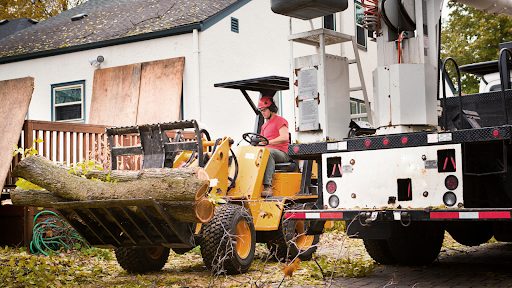Why is tree removal important before renovating your home?
Tree removal protects your renovation investment by eliminating hazards before construction begins. Dead or unstable trees pose serious risks to workers, equipment, and neighbouring properties during building work.
Removing problematic trees early preserves tree health across your property. Construction activities compact soil and damage root systems, so clearing trees within the work zone prevents stress to the remaining urban forest. This proactive approach safeguards the trees you want to keep.
Property value increases when you address tree hazards before they become liabilities. Buyers and insurers view well-maintained landscapes favourably, whilst dead or dangerous trees raise red flags during inspections.
Environmental responsibility extends to removing trees that threaten native ecosystems or violate local regulations. Early removal allows you to meet council requirements and avoid costly fines or project delays.
When is the best time to schedule tree removal in your renovation plan?
Schedule tree removal as early as possible in your renovation planning, ideally before any construction begins. A tree removal company should assess your property and remove problematic trees before excavation, foundation work, or material deliveries commence.
Why is early tree removal necessary?
- Trees positioned within 10 feet of proposed structures require immediate attention from a qualified tree removalist. These specimens rarely survive construction impacts and pose significant risks to workers and equipment.
- Any tree deemed unable to withstand protection measures during building work should be marked for removal during initial site assessments.
The role of conservation planning
Conservation planning demands attention at least one growing season before construction starts. This timeline allows remaining trees to recover from nearby removals and enables effective root-zone protection strategies. Searching “tree removal near me” early in your planning phase connects you with local tree service providers who understand seasonal considerations and permit requirements.
Avoiding costly delays
Early scheduling prevents costly delays when contractors discover hazardous trees blocking access routes or equipment placement. Tree removals completed before renovation work begins eliminate the risk of falling branches damaging new structures, protect construction crews, and maintain project timelines without interruption.
How do trees interfere with construction?
Trees create multiple obstacles during renovation work, halting progress and inflating budgets. Root systems extend far beyond the visible canopy, often spreading underground to one to three times the tree’s height. Excavation for foundations or utility lines severs these roots, destabilising the tree and creating hazardous conditions on site.
Risks posed by trees during construction
- Overhanging branches pose immediate risks to workers, equipment, and structures.
- Unstable trees near construction zones can fall without warning, particularly when heavy machinery causes ground vibrations.
Importance of professional tree services
A qualified tree cutting service identifies these threats before work begins. Searching for “tree loppers near me” or “tree service near me” after problems arise means paying premium rates for urgent work. Proactive assessment by tree services near me prevents these disruptions entirely.
Impact of soil grade changes on trees
Soil grade changes around existing trees suffocate roots by altering oxygen and water access. Even minor adjustments of 15-20 centimetres can kill established trees within months. Root damage from compaction or trenching weakens trees gradually, leading to unexpected failures mid-project.
What approvals or permits are needed for tree removal in Sydney?
Sydney tree prevention laws require property owners to obtain a local council permit before undertaking tree removal or lopping. Each local council maintains specific regulations governing which trees require approval, typically based on species, trunk diameter, and heritage significance.
Complying with these requirements protects you from substantial fines and potential legal action. Unauthorised tree lopping service work can result in penalties exceeding $1 million under NSW legislation for individuals.
Approvals become mandatory when:
- Removing trees exceeding specified trunk diameters (commonly 5-10 metres from ground level)
- Working on heritage-listed or protected native species
- Conducting local tree removal within conservation zones
- Performing work affecting trees on neighbouring properties
Applications require the submission of detailed arborist reports, site plans, and justification for the proposed work. Processing times vary between councils, ranging from several weeks to months, depending on complexity and local workload.
How can an arborist help you plan safe and efficient tree removal?
A qualified tree arborist conducts thorough assessments of tree health and structural integrity to identify which trees pose risks during your renovation. They examine root systems, canopy stability, and disease presence to determine the safest removal approach.
Professional tree services distinguish between trees requiring complete removal and those suitable for pruning or lopping. This expertise prevents unnecessary tree loss whilst addressing genuine hazards. When searching for “tree cutting services near me”, prioritise certified arborists who understand local species and construction impacts.
Your arborist designs tree cutting strategies that protect surrounding vegetation and structures. They plan:
- Directional felling techniques to avoid damage to remaining trees
- Staged removal processes for trees near buildings
- Root zone protection measures during excavation
- Post-removal site assessments to prevent soil erosion
This professional guidance ensures your renovation proceeds safely whilst preserving valuable trees that enhance your property’s appeal and environmental contribution.
